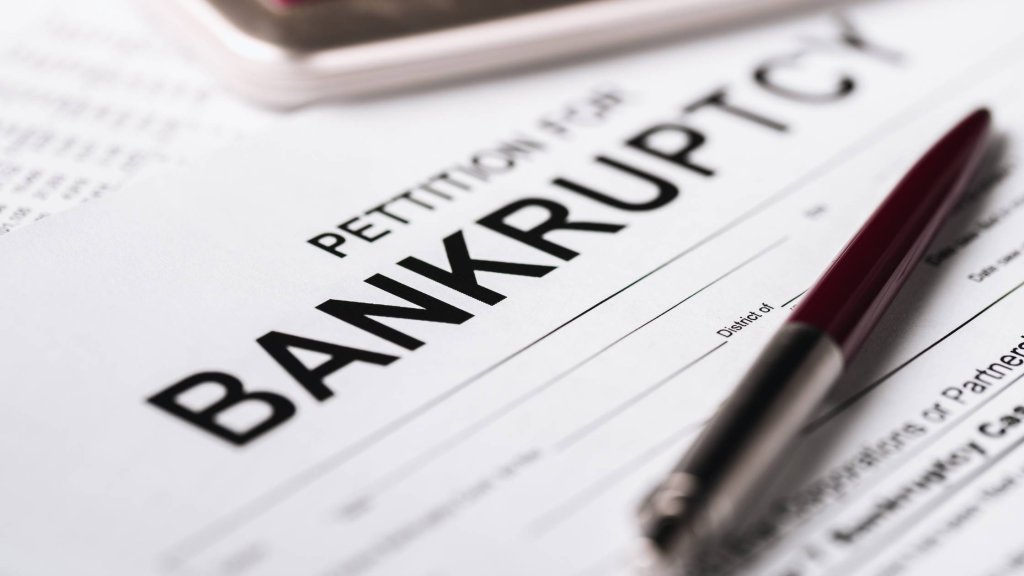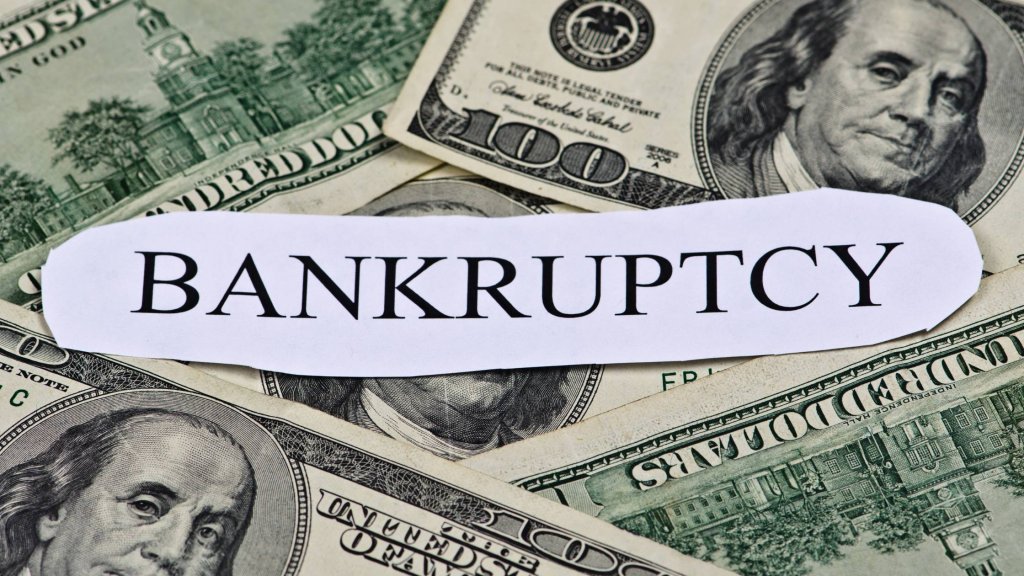VIEW BY TOPIC
- Finding Customers
- Business Systems
- Managing Employees
- Leadership
- Managing Money
Related Posts

Ready to Grow Your Business Fast?
Here’s How I Grew Five Businesses, and Eventually Sold One to a Fortune 500 Company.

Chapter 7 vs Chapter 11 Bankruptcy When Closing Your Business
You’ve done the 5 steps to avoid business bankruptcy, but you just can’t continue cutting it each month.
As such, it’s essential to understand the differences between Chapter 7 and Chapter 11 bankruptcy filings under the US Bankruptcy Code. Each option has unique features, advantages, and disadvantages, so choosing the right bankruptcy chapter will depend on your specific financial goals and objectives. Not to mention, there is potential that there is a debt collection lawsuit coming your way or already being dealt with. In this article, we’ll provide you with a comprehensive overview of the differences between Chapter 7 and Chapter 11 bankruptcy filings and the requirements for filing under each chapter.
Chapter 7 vs Chapter 11 Bankruptcy: Understanding the Key Differences
When it comes to bankruptcy, it’s essential to understand the differences between Chapter 7 and Chapter 11 filings. Chapter 7 is a liquidation bankruptcy, while Chapter 11 is a reorganization bankruptcy. In this article, we’ll explore the differences between the two types of bankruptcy filings and what they entail.
Chapter 7 Bankruptcy: An Overview

Individuals can file for bankruptcy under either Chapter 7 or Chapter 11 of the Code. To qualify for Chapter 7, the individual must meet specific income requirements specified under the code. Chapter 7 cases are designed for individuals who don’t have enough disposable income to repay their debts. Disposable income is the amount of money remaining after paying reasonable living expenses.
Chapter 7 Bankruptcy Calculator
If you are wondering if you or your startup would qualify for a chapter 7, take the chapter 7 bankruptcy calculator. It will help you see your qualification and also look at other options if a chapter 7 is not the best option for you.
Asset Liquidation in Chapter 7 Bankruptcy
When an individual files for Chapter 7 bankruptcy, the trustee may seize and sell any non-exempt property to pay off creditors. Non-exempt property refers to assets with equity that exceeds the allowed bankruptcy exemptions. The amount of each bankruptcy exemption depends on whether the debtor may use federal or state bankruptcy exemptions. The debtor’s residency for the two years preceding the filing of the Chapter 7 petition determines the bankruptcy exemptions they may claim.
Most Chapter 7 cases filed by individuals are no-asset cases. In a no-asset case, the trustee abandons any of the debtor’s property that cannot be sold to repay creditors. The Chapter 7 case is typically complete in about four to six months after filing, and the debtor receives a bankruptcy discharge for most unsecured debts. However, some debts, such as student loans, most tax debts, debts owed to the government, alimony, and student loans, are not forgivable in bankruptcy.
Protection of Property in Chapter 11 Bankruptcy
In contrast, Chapter 11 protects a debtor’s property and allows them to reorganize their debt to pay creditors over time. Chapter 11 is typically reserved for businesses but is available for individuals as well. The process can be more expensive and time-consuming than Chapter 7 bankruptcy, and it requires the debtor to file a detailed Chapter 11 Plan of Reorganization.
Chapter 11 Bankruptcy for Businesses
Chapter 11 bankruptcy is primarily designed for businesses that want to reorganize their operations and continue operating while repaying their debts over time. However, this process is significantly more expensive than Chapter 7 bankruptcy. Small businesses can expect to pay an average of $50,000 for a Chapter 11 bankruptcy case, while larger corporations may spend up to $500,000.
Chapter 11 for Individuals
For individuals with debts that exceed the Chapter 13 debt limits, Chapter 11 bankruptcy may be the only way to restructure their debts. However, the Chapter 11 process is generally expensive and inefficient for most individuals. Individuals who have substantial income and assets typically file for Chapter 11.
Chapter 7 for Businesses
When a business files for Chapter 7 bankruptcy, it means the business is closing down. The Chapter 7 trustee assumes control of all business assets on the date of the bankruptcy filing. Secured creditors receive their collateral, and the remaining assets are sold to pay off the company’s unsecured creditors.
Chapter 11 for Businesses
Businesses that want to remain open but need assistance in restructuring their debts can file for Chapter 11 bankruptcy. The party filing for Chapter 11 remains in control of the business assets, and the business continues to operate during the bankruptcy case. However, all Chapter 11 debtors must follow specific guidelines.
Understanding Subchapter 5 of Chapter 11 Bankruptcy

Subchapter 5 provides a more streamlined approach to Chapter 11 bankruptcy, making it easier for businesses with less debt to receive some benefits from Chapter 11. It can be a smoother process that leads to a Chapter 11 plan confirmation. If you’re interested in exploring Subchapter 5, you can check out an example subchapter to get a better understanding of the process.
Navigating Chapter 11 Bankruptcy Process
Chapter 11 bankruptcy is a complicated process that requires businesses to reorganize their operations and manage debt repayments. To file for Chapter 11, the debtor must submit a detailed Disclosure Statement, which includes comprehensive information about their business, including assets, liabilities, income, and other affairs. In this article, we will provide a comprehensive guide to understanding the Chapter 11 bankruptcy process, from filing the Disclosure Statement to discharge from debt.
Filing the Disclosure Statement
To initiate the Chapter 11 bankruptcy process, the debtor must file a detailed Disclosure Statement. This statement must provide sufficient information for parties to vote for or against the Chapter 11 plan. Some bankruptcy courts have local forms that Chapter 11 debtors can use to prepare the Disclosure Statement.
The Chapter 11 Plan of Reorganization
The debtor must also file a detailed Chapter 11 Plan of Reorganization, which is much more detailed than the Disclosure Statement. This plan contains descriptions of the classes of claims and how creditors within each class will be paid. Creditors vote for or against the Chapter 11 plan, and the plan cannot be confirmed without creditor participation.
Creditor Committees
In some cases, the court may appoint Creditors’ Committees responsible for investigating the debtor’s conduct, participating in the administration of the case, and drafting a Chapter 11 plan. Creditors may also file competing plans for consideration.
Confirmation of the Chapter 11 Plan
Chapter 11 cases usually involve the filing of several motions, including motions to use cash collateral, value assets, assume or reject leases, and continue or cancel contracts. Creditors may file motions to dismiss, convert the case to Chapter 7, or modify the automatic stay to obtain collateral.
The debtor may remain in Chapter 11 for years, and business Chapter 11 cases can be very complex. It could take more than a year to confirm a Chapter 11 plan, during which the debtor must pay quarterly fees and file monthly reports.
Discharge from Debt
Upon confirmation of the Chapter 11 plan, the debtor is discharged from any debt incurred before the date of confirmation. The Chapter 11 plan creates a new contract with the debtor’s creditors. If the debtor fails to make the payments required by the Chapter 11 plan, creditors can take certain actions to collect the debts or protect their rights in collateral securing loans.
Streamlined Chapter 11 Cases
Small businesses and those that own a single asset may file a streamlined Chapter 11 case, which is less complicated than a regular Chapter 11 case. This process is intended to make it easier for businesses with less debt to receive some benefits from Chapter 11. It can be a smoother process that leads to a Chapter 11 plan confirmation.
Comparing Bankruptcy Fees and Costs: Chapter 7 vs. Chapter 11
Filing for bankruptcy can be a challenging decision, and understanding the associated fees and costs is crucial. You can check the estimated cost to file bankruptcy by state, but let’s compare the filing fees and attorney costs for Chapter 7 and Chapter 11 bankruptcy to help you make an informed decision based on your financial situation.
Filing Fees

Chapter 7 bankruptcy filing fee is significantly lower than Chapter 11. The filing fee for a Chapter 7 bankruptcy case is $335, while the filing fee for a Chapter 11 case is $1,717. Moreover, Chapter 11 debtors have to pay quarterly fees to the United States Trustee. The minimum Chapter 11 quarterly fee is $325, and it is calculated based on the disbursements made during the three-month calendar quarter.
Attorney Fees
The attorney fees for Chapter 7 and Chapter 11 cases differ significantly. The average attorney fee for a Chapter 7 case ranges from $1,000 to $1,750, whereas the fees for Chapter 11 cases are comparatively higher. Small Chapter 11 cases can cost between $10,000 to $25,000, medium-sized cases up to $50,000, and large, complex cases involving multi-million dollar corporations or individuals can cost up to $500,000.
Other Considerations
While some individuals and companies can file for Chapter 7 without an attorney, Chapter 11 cases require the assistance of an experienced Chapter 11 lawyer. A bankruptcy filing is a complex legal process, and a qualified attorney can guide you through the proceedings and help you understand the options available to you.
When considering which type of bankruptcy to file, it’s crucial to consider all factors, including the fees and costs. While Chapter 7 may be a more straightforward process, individuals and businesses with more complicated financial situations may need to consider Chapter 11 bankruptcy despite the higher fees and costs. Seeking the advice of a qualified attorney can help ensure that you make informed decisions and understand the process. You may also consider canceling products such as Experian or other products that you were using in your business.
How to Find Out if Someone is Suing You
There is potential that there is a debt collection lawsuit that you or your startup is having to deal with, depending on how much debt you have, and how long it has been going on. But what if you don’t know? How do you find out if someone is suing you? There are a few different options, but your best bet would be to contact the country clerk, check PACER, visit the courthouse, or check online.
Summing it Up
In conclusion, while the fees and costs associated with Chapter 11 may be higher, the benefits of reorganization and debt restructuring may make it a more viable option for those with complex financial situations. Understanding the key differences between Chapter 7 and Chapter 11 bankruptcies and seeking professional legal guidance can help you navigate the bankruptcy process and achieve financial stability.














